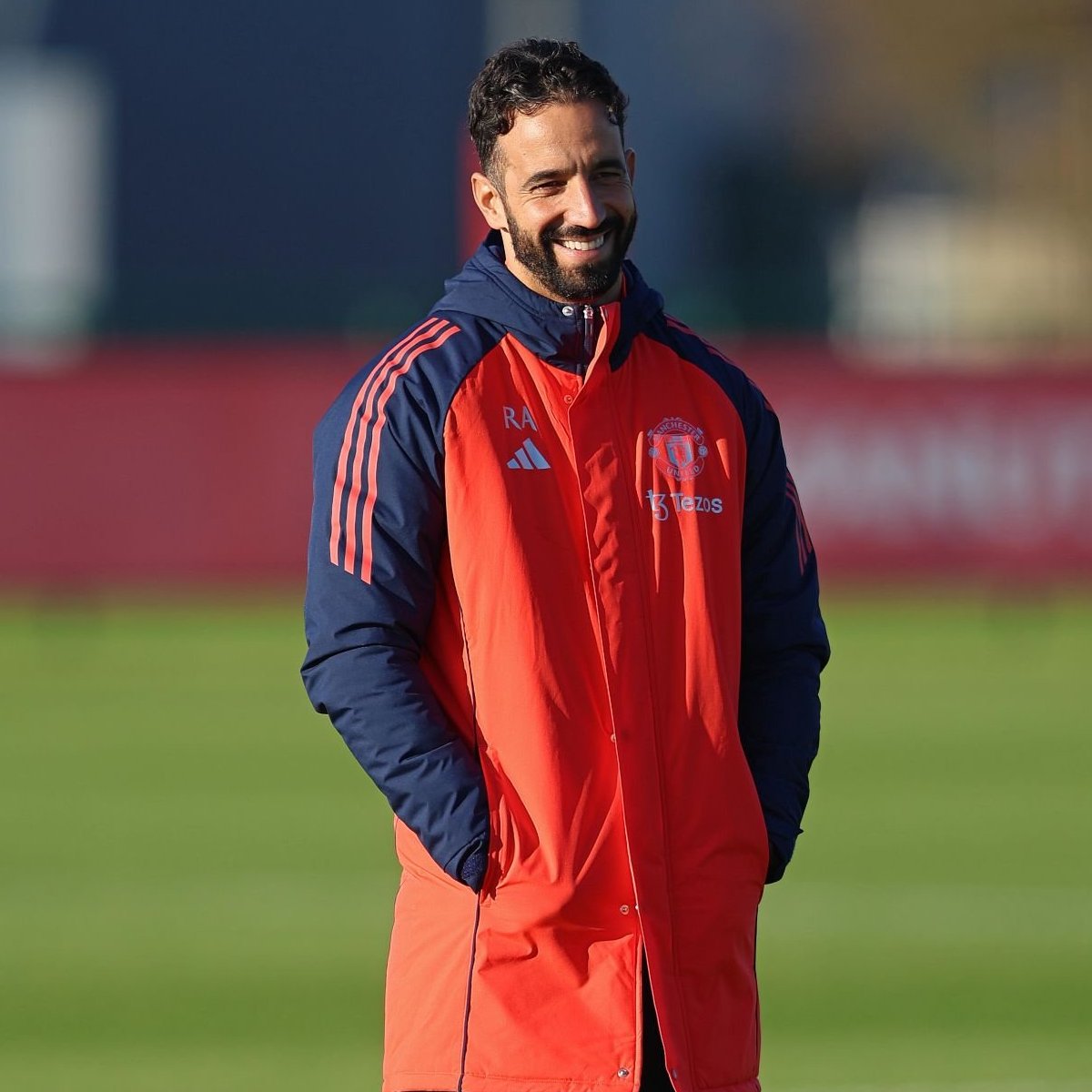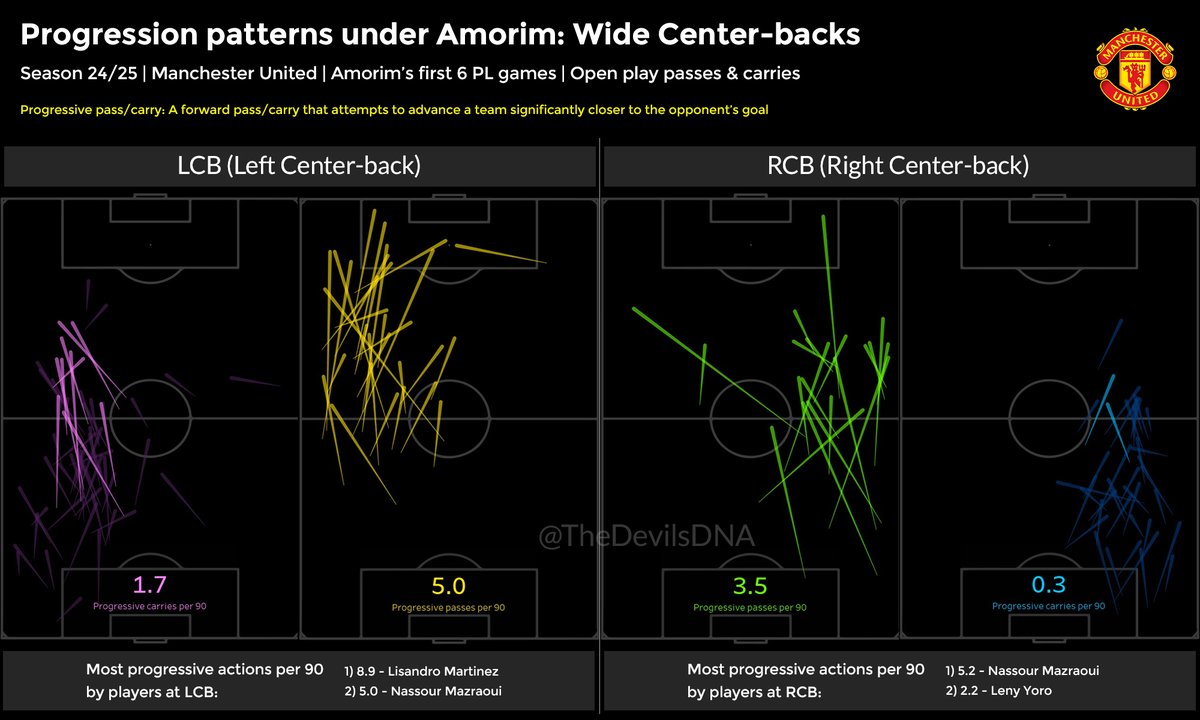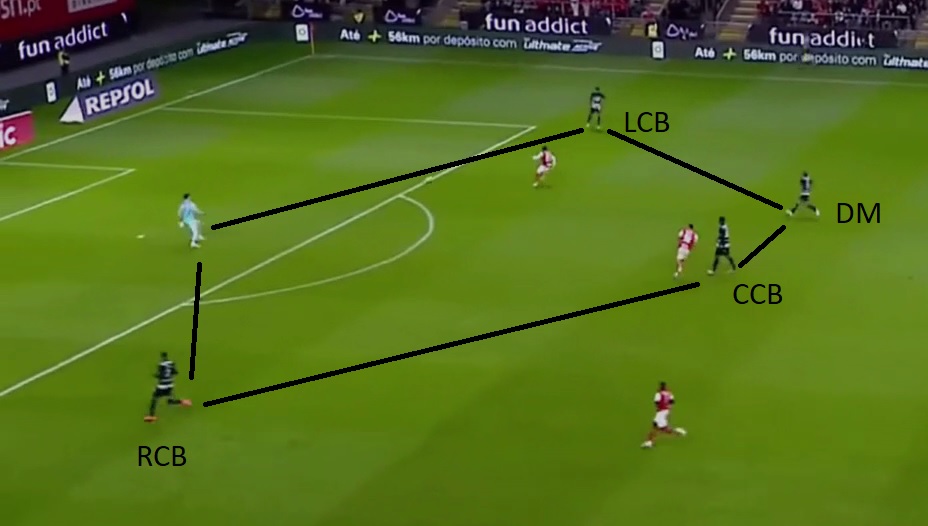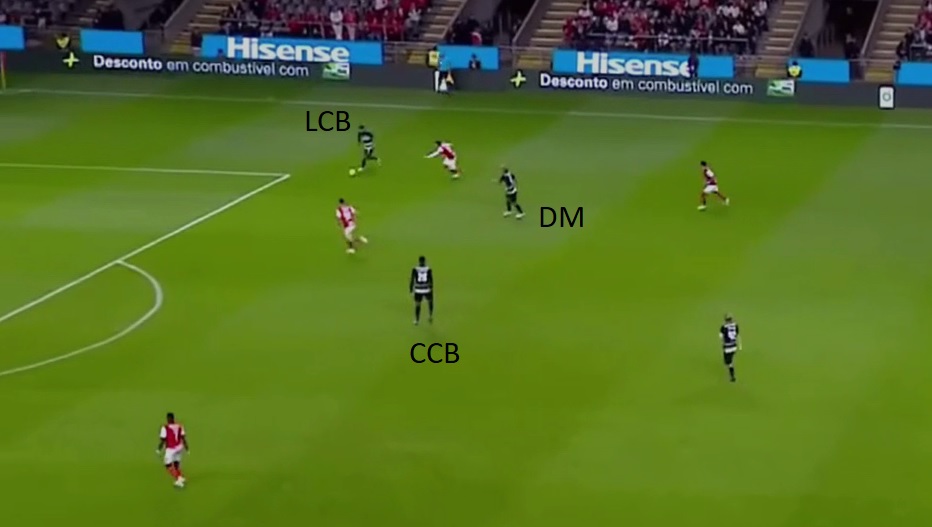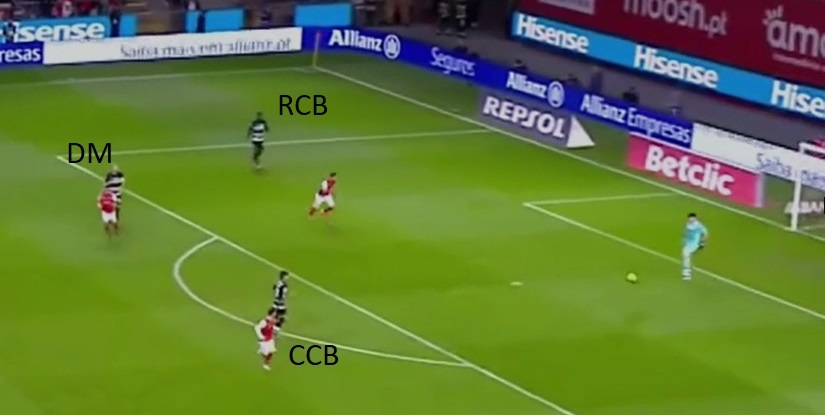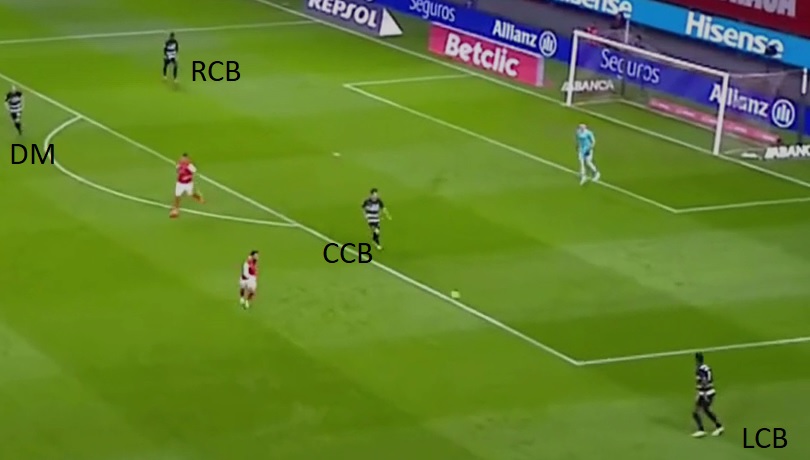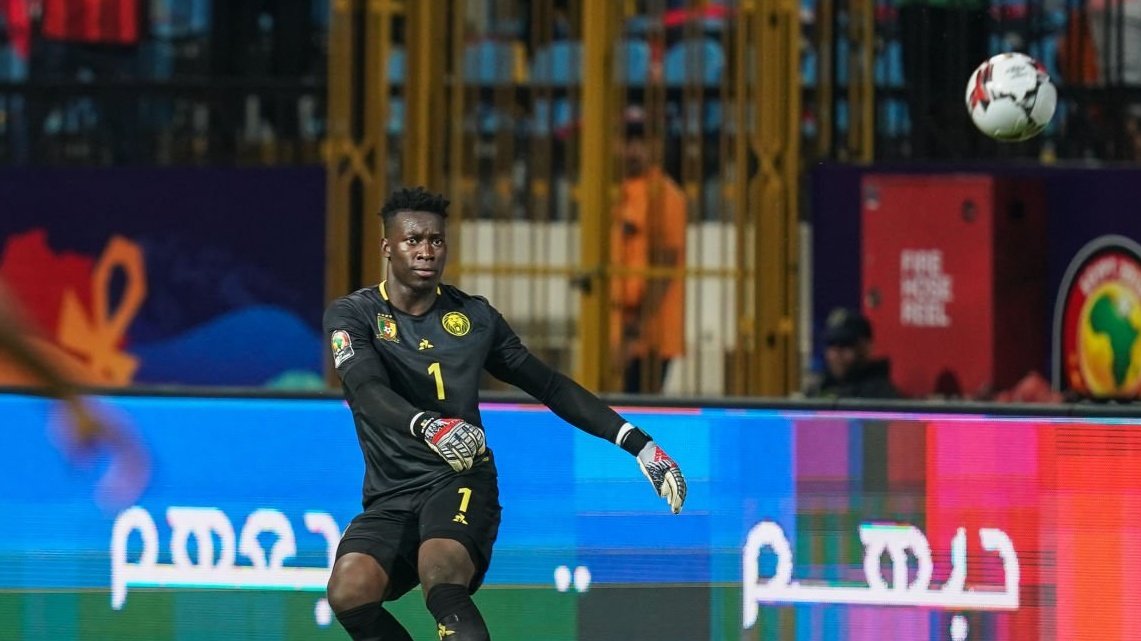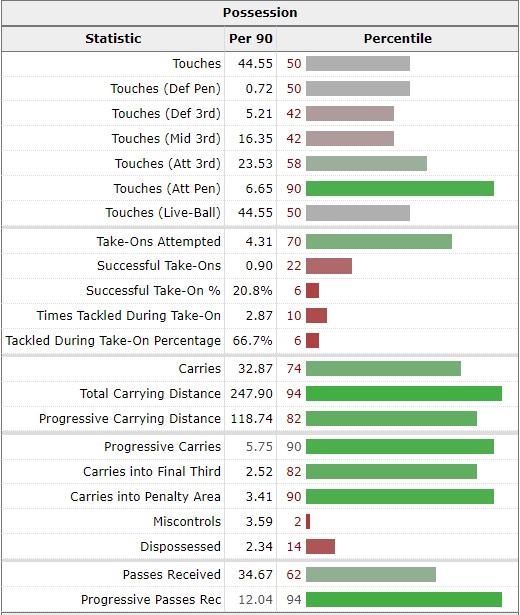Erik Ten Hag's Manchester United have a final third problem
Let me first state the problem upfront.
"Manchester United are consistently poor at entering the final 3rd, sustaining attacks & creating quality chances"
Now let me explain the issue with data & examples.
Thread🧵

Let me first state the problem upfront.
"Manchester United are consistently poor at entering the final 3rd, sustaining attacks & creating quality chances"
Now let me explain the issue with data & examples.
Thread🧵
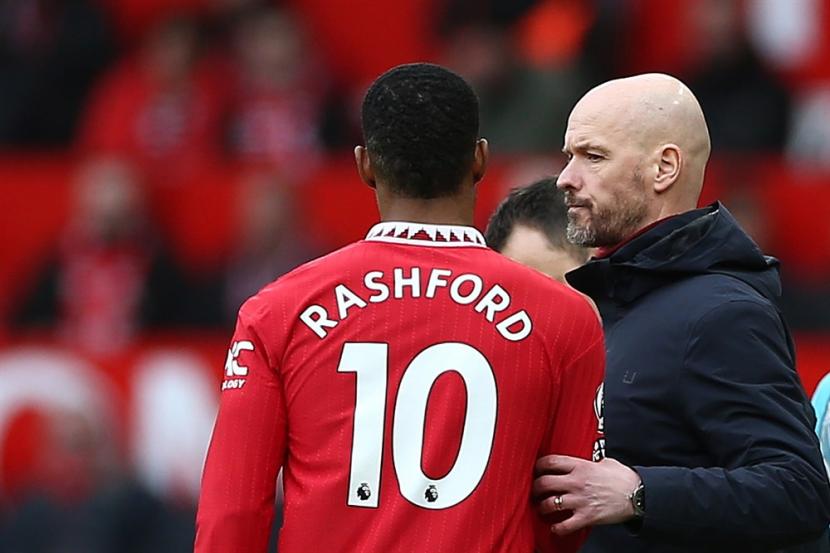
We already have a season of life under ETH to give us insight into the final 3rd approach. Some 22/23 stats & our ranking in EPL:
Goals: 7th
xG: 6th
Passes into final 3rd: 6th
Carries into final 3rd: 6th
Progressive passes: 7th
Attacking 3rd touches: 6th
Pen area touches: 6th
Goals: 7th
xG: 6th
Passes into final 3rd: 6th
Carries into final 3rd: 6th
Progressive passes: 7th
Attacking 3rd touches: 6th
Pen area touches: 6th

But on the other hand:
Shots on target: 2nd
Chances created: 2nd
Open-play shot creating actions: 1st
Rashford goals: 30
Rashford xG: 20.6
Rashford % of United's total goals: 30%
Bruno chances created: 1st in EPL
Bruno % of United's total chances created: 24%
Shots on target: 2nd
Chances created: 2nd
Open-play shot creating actions: 1st
Rashford goals: 30
Rashford xG: 20.6
Rashford % of United's total goals: 30%
Bruno chances created: 1st in EPL
Bruno % of United's total chances created: 24%

In summary of the above data, we were largely ~6th for a lot of passing, final 3rd entry & creation metrics, but the reason we came 3rd in the league was due to over-performance & over-reliance on Bruno & Rashford to bail us out in the few times that we did enter the final 3rd. 

Now let's look at our main avenues for chance creation across 17 months under ETH. There are 4 clear patterns.
1. Switch to winger after overload & then 1v1 action from winger
We've seen this a lot esp Rashford. Vs Arsenal & Nottingham lot of our best chances came via this.
1. Switch to winger after overload & then 1v1 action from winger
We've seen this a lot esp Rashford. Vs Arsenal & Nottingham lot of our best chances came via this.
This is our most common pattern & was in ETH's Ajax days too. After a lot of passing in one area, the midfielders switch to a winger in space. Sometimes it's done without much passing either. Puts a lot of burden on the winger to create something magical out of very little.
2. Vertical pass to a runner in-behind
Again often via Bruno to Rashford, the idea is for a runner to attack the space behind the defensive line & a midfielder to play them in. We've seen this less vs smaller teams & more vs top teams that give us this space. Big game tactic.
Again often via Bruno to Rashford, the idea is for a runner to attack the space behind the defensive line & a midfielder to play them in. We've seen this less vs smaller teams & more vs top teams that give us this space. Big game tactic.
Again, the idea seems to be to take advantage of the excellent runners & the good vertical long-ball players in the squad. Bruno, Eriksen, Casemiro, Mount are all good at it. Hojlund's addition only furthers this tactic as he's a great runner into space. Sancho can't. Antony avg.
3. Counter-press, steal & release quickly
Another avenue is to press, win the ball in the middle of the park & quickly play 1-3 vertical passes towards goal before the opponent defence can re-organize into shape. Point 2 (pass in-behind) is often in combination with this point.
Another avenue is to press, win the ball in the middle of the park & quickly play 1-3 vertical passes towards goal before the opponent defence can re-organize into shape. Point 2 (pass in-behind) is often in combination with this point.
This seems to be another reason we bought Mount & why ETH pushes up Casemiro to win balls. He wants us to become a good counter-pressing unit. It's also the reason we're okay playing long balls with the idea that if we lose possession, we can counter-press & win it back quickly.
4. Lofted ball for CF to hold up
Another simplistic pattern is to simply lump the ball long to a target man & hope that he can take it down, control it & play in a wide runner or oncoming midfielder. Bypasses midfied in one go & if it fails, there's the chance to counter-press.
Another simplistic pattern is to simply lump the ball long to a target man & hope that he can take it down, control it & play in a wide runner or oncoming midfielder. Bypasses midfied in one go & if it fails, there's the chance to counter-press.
We have seen Weghorst being used for this last year & this year the intention to use Hojlund as a target is also clear. Again, this is consistent with ETH using Dolberg/Huntelaar/Haller often as a target man when build up wasn't working or urgency was required. Game chasing plan.
Above, I only gave examples from the Arsenal & Spurs games this year since I had them cut & ready. You can see any of the other games to notice these 4 patterns happen regularly.
So, what's the issue in all of this? Look at the common player expectations in these patterns.
So, what's the issue in all of this? Look at the common player expectations in these patterns.

All of them encourage the midfielders & defenders to go long & the attackers to try aggressive final actions. There's no intention to keep the ball & go for longer chains of possession. We're not thinking of 5+/10+ pass sequences. These are all mostly quick 1-4 pass sequences. 

Data confirms. Currently, we're 11th for 10+ pass sequences, 12th for build up attacks & 2nd for direct attacks.
Our intention in oppo half is to not keep the ball much. Frustrations of team not sustaining possession in final 3rd need to be directed to tactics. It's not the aim.
Our intention in oppo half is to not keep the ball much. Frustrations of team not sustaining possession in final 3rd need to be directed to tactics. It's not the aim.

Our possession & 1st phase form fluctuates wildly depending on oppo. If it's an oppo who doesn't press (Palace), we enjoy possession & 1st phase access & the 4 patterns appear after some aimless circulation. If oppo presses & keeps ball, it begins earlier (Bayern, Burnley). 

You're essentially insisting that the midfielders keep attempting switches, long balls & through balls & the attackers keep trying game-breaking 1v1 actions. This is the reason Bruno, Casemiro, Eriksen etc feel wasteful & "hero-ball" & Rashford feels "selfish". It's by design. 

TBF, in isolation, these 4 aren't bad patterns at all. In fact, lot of top teams rely on these when their plan A of sustained possession isn't working. But when such directness is your whole plan A itself, that's when it becomes unsustainable & has a low ceiling for a top team. 

What are the issues with this approach?
A. Sustained attacks & clear-cut chances become rare. There's a reason good teams keep trying to move the ball & rotate in final 3rd to pull oppo defence to create gaps & generate high-xG shots. Tough to master but we aren't even trying.


A. Sustained attacks & clear-cut chances become rare. There's a reason good teams keep trying to move the ball & rotate in final 3rd to pull oppo defence to create gaps & generate high-xG shots. Tough to master but we aren't even trying.


B. You're very reliant on individual actions. This approach comes down to immense player execution to bail the team out. The day Rashford isn't able to cut past & power through or Bruno's game-breaking final balls aren't coming off or Hojlund isn't able to hold up, you're done. 

Last year, Rashford scored 30 goals from 20.6 xG. Almost 50% xG overperformance! Such overperformance usually reverts over time (1 goal from 2.7 xG this year). The real solution is - generate higher xG as a team via consistent high value chances. 

C. It puts defensive pressure on team. We've seen this often. Forcing an end-to-end game & playing direct balls leaves you open to receiving the same quickly too. Vs Palace, it might be rare but vs a better team it's constant & strains the team to run back & defend transitions. 

ETH said before the Palace game that he prefers to have possession but it's not needed. It's reflected in the tactics. Our build up & possession are just a factor of oppo quality. But beyond that, our final 3rd dynamics are consistent with heavy directness & reliance on players. 

This approach will always limit the ceiling on chance creation & goals scored. Like last year, as a team we'll probably not break into the top 4 for attacking metrics. And if the individuals we are relying on don't overperform, we won't for points either.
System needs to evolve.
System needs to evolve.

Also, one last thing since I'm sure I'll get those replies. I'm 100% ETH in. My thread on his philosophy & this one only highlight improvement points to become a treble-aiming team. He deserves a lot of time to improve both aspects esp with board issues.
https://twitter.com/TheDevilsDNA/status/1706383822412190172
Credit to @fbref and @OptaAnalyst for all the data in this thread.
• • •
Missing some Tweet in this thread? You can try to
force a refresh


